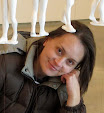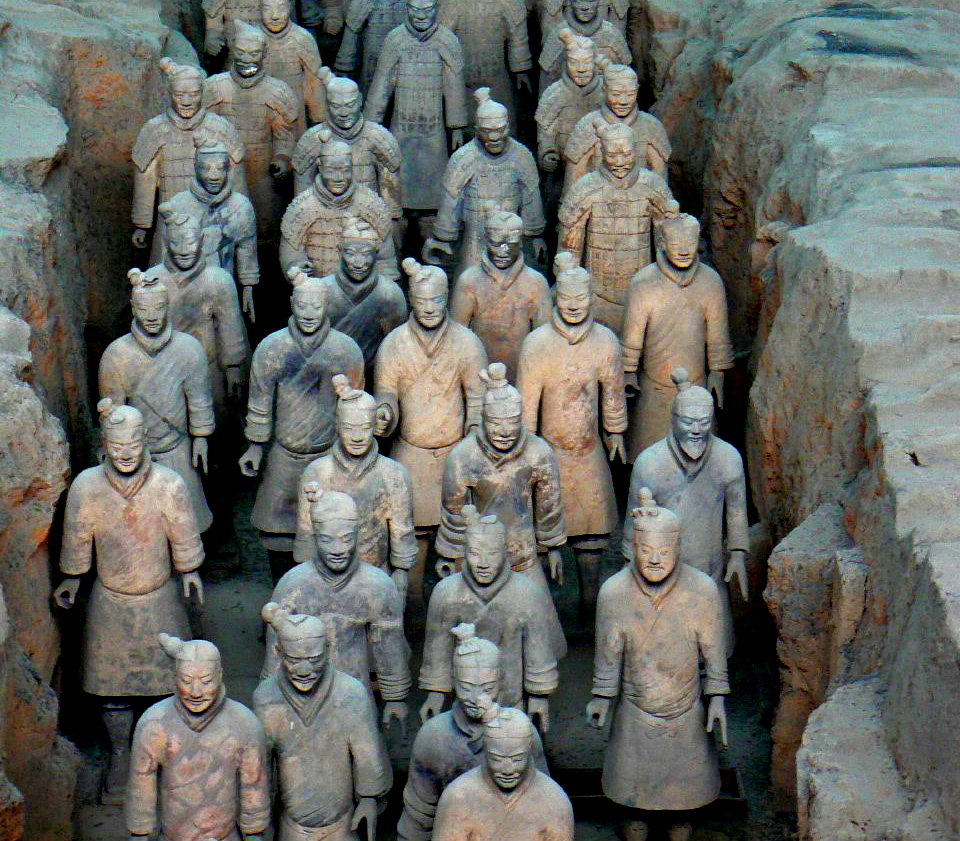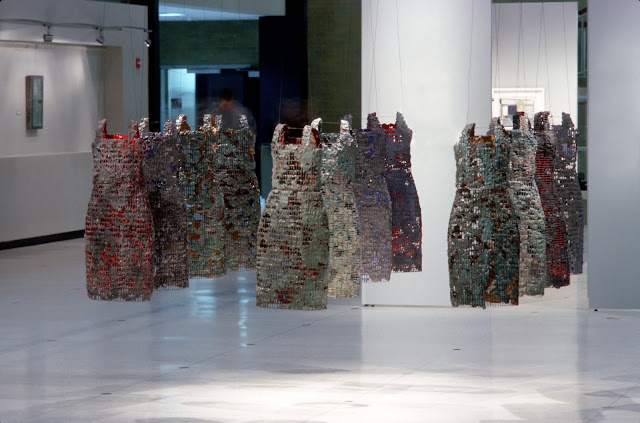I've just completed a new armor dress for a client in Salt Lake City. It fits so beautifully in her modern home. This one has a metallic copper glaze on the outside and a boric acid-based glaze on the inside. It is fired at cone 010, which is a rather low temperature. This is because I have steel fencing wire in the support structure and I don't want it to melt on me in the kiln!
Here is a statement I wrote years ago about these dresses:
"My work often references the female body, though not so much its minutest details as its presence. This presence comes from a delicate balance between permanence and passing. The empty dress recalls the shape of the body in the way that I believe objects can “remember” their human influence. But they age and can be forgotten.
Fragmented forms repeated many times in my work serve as armies both tenuous and defiantly enduring. This tension is profound to me, and a metaphor for the reality I see: what we perceive about our life and our world is often in conflict. While we want many things to be over with, we also wish for some things never to go away.
I find we are in a state of eternal yearning - to go forward, to hold on, to simply be and have that be enough.
Techniques
My clay and steel Armor Dresses are made from fencing wire cut from a paper dress pattern and then “sewn” together with wire and shaped with darts and seaming much like a fabric garment. I then cover the steel with a special low-shrinkage clay which I then fire in my electric kiln. I take care not to exceed the melting temperature of steel as the piece’s strength comes primarily from the steel structure.
This technique is highly unique and to my knowledge rarely if ever used – clay and steel are considered incompatible. I love that."
I often tell people that these dresses are a feminine version of the suit of armor. I am highly influenced by the Terra Cotta warrior sculptures unearthed near Xian, China. I have exhibited my dresses in battle formation in reference to these beautiful works. I also wanted my dresses to look unearthed in a way, aged and changed by the elements.

































